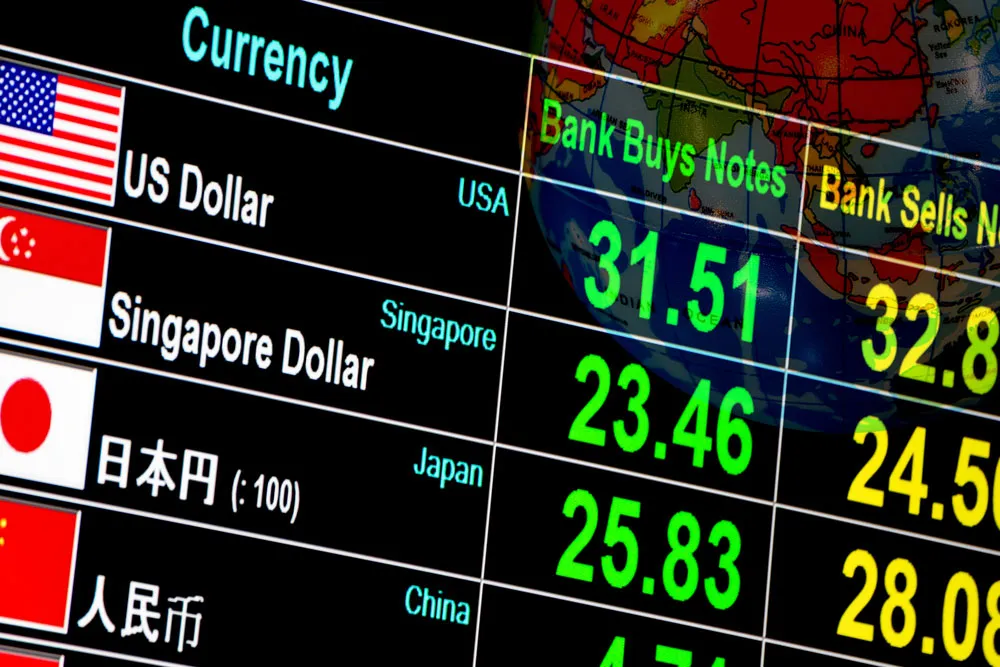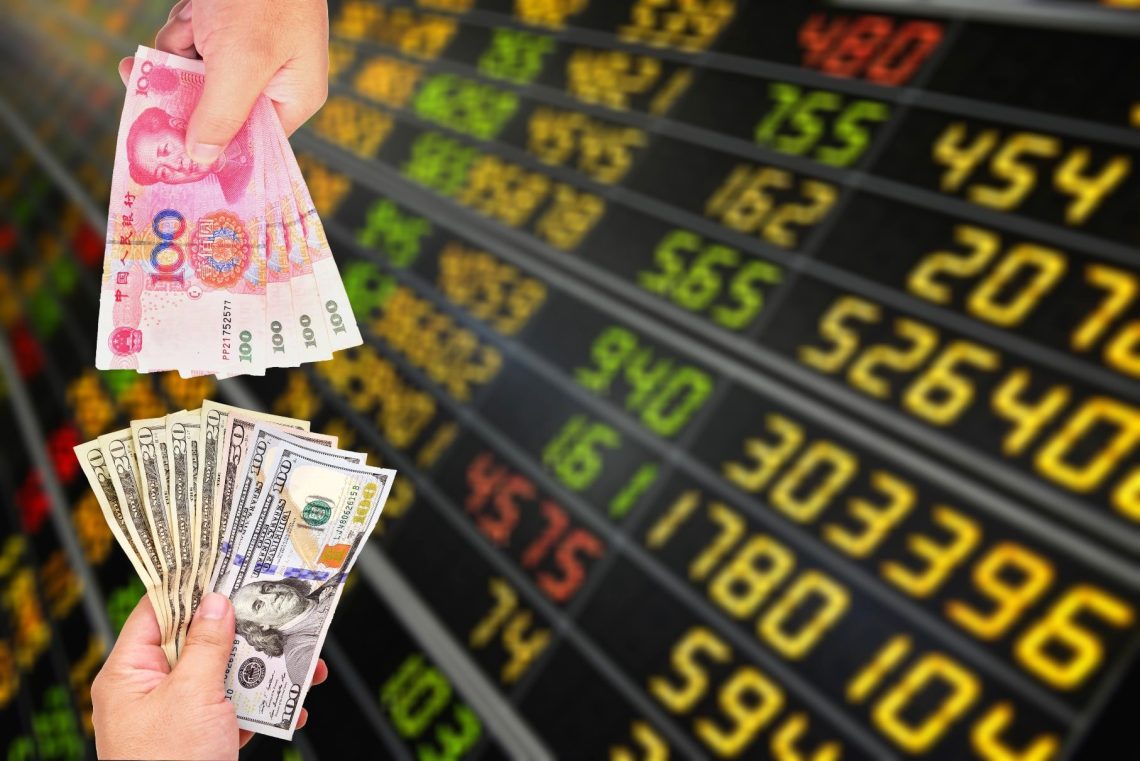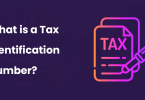Navigating the World of Currency Exchange
The global financial landscape is a tapestry woven with the threads of various currencies, each contributing to the intricate patterns of international trade and travel. At the heart of this system lies the currency exchange, a vital mechanism that allows individuals and businesses to navigate the complexities of foreign currencies. In this comprehensive guide, we will delve into the workings of currency exchange, explore its nuances, and assess the impact of current technological trends on this essential financial service.

Unraveling the Essence of Currency Exchange
Definition: A currency exchange is a licensed business facilitating the exchange of one currency for another. Whether it’s physical money, such as coins and paper bills, or digital transactions, currency exchanges operate in various locations like airports, banks, hotels, and resorts. Commonly known as “bureau de change” or “casa de cambio,” these establishments should not be confused with the expansive foreign exchange (forex) market where institutional players engage in substantial currency transactions.
Dynamics of Currency Exchange
How Currency Exchange Works
Currency exchange transpires through a series of buy and sell transactions executed by businesses—both physical and digital. Imagine you have U.S. dollars and wish to exchange them for Australian dollars. Visiting a currency exchange store, you can buy Australian dollars based on the international spot rate, a daily-changing value determined by a network of banks.
The currency exchange store adjusts this rate, ensuring profitability. For instance, if the spot rate is 1.2500 for exchanging U.S. dollars into Australian dollars, the store might modify it to 1.20, effectively charging a 5-cent fee per dollar. While this fee structure exists, consumers may find it cost-effective to incur ATM or credit card fees at the foreign destination rather than using exchange services ahead of time.
Where to Find a Currency Exchange
Currency exchange businesses come in various forms—stand-alone entities, small booths at airports, or services offered by large international banks. Airports are common hubs for currency exchanges, allowing travelers to obtain the currency of their destination or convert excess money upon their return. However, rates at airport exchanges tend to be higher than those at banks in the city of departure.
As the world leans towards a cashless era, some banks offer cards that can load multiple currencies with minimal or no fees. Offshore ATMs, especially those affiliated with global banks like HSBC, provide additional options. Online platforms offered by banks, forex brokers, or financial institutions extend accessibility to currency exchange services.
Country-Specific Considerations
When traveling outside one’s own country, it’s crucial to be aware of country-specific fees. For instance, before July 2020, Cuba charged a 10% tax on tourists buying Cuban convertible peso (CUC) with U.S. dollars. Being mindful of such nuances ensures a smoother financial experience while abroad.
The Role of Bid-Ask Spreads in Retail Forex Market
Currency exchanges not only charge nominal fees for their services but also capitalize on the bid-ask spread in a currency. The bid price represents what a dealer is willing to pay for a currency, while the ask price is the rate at which a dealer will sell the same currency. Let’s illustrate this with an example:
Ellen, an American traveler in Europe, wants to purchase euros at the airport. The cost may be quoted as follows:
EUR 1 = USD 1.30 / 1.40
Ellen pays USD 7,000 to buy EUR 5,000.
Katelyn, the next traveler in line, wants to sell her leftover euros. She can sell them at the bid price of USD 1.30, receiving USD 6,500.
The bid-ask spread, in this case, allows the currency exchange to profit USD 500 from the transaction.
Technological Trends Shaping Currency Exchange
As we stride into the digital age, technology reshapes traditional currency exchange practices, introducing efficiencies, enhancing security, and influencing broader financial landscapes.
Technological Trends Impacting Currency Exchange
Blockchain and Distributed Ledger Technology (DLT): The introduction of blockchain and DLT brings transparency and decentralization to currency exchange. These technologies streamline processes, enhance transparency, and fortify security against fraudulent activities.
Digital Vaults and Encryption: Advanced encryption fortifies digital vaults, providing secure alternatives to traditional safe-deposit boxes. These digital solutions offer secure storage for sensitive documents, certificates, and digital assets.
Biometric Authentication: Incorporating biometric authentication, from fingerprint scans to facial recognition, enhances the security of currency exchange processes. This ensures that access to stored assets is restricted to authorized individuals.
Smart Contracts: Powered by blockchain, smart contracts automate aspects of currency exchange agreements. These self-executing contracts facilitate seamless asset transfers, trigger events based on predefined conditions, and enhance overall efficiency.
Future Trajectories in Currency Exchange
Integration of Artificial Intelligence (AI): AI algorithms contribute to risk assessment, fraud detection, and proactive monitoring of currency exchange processes. Machine learning capabilities adapt to evolving threats, fortifying the security infrastructure.
Decentralized Finance (DeFi): DeFi introduces decentralized alternatives to traditional currency exchange services. Peer-to-peer transactions, enabled by smart contracts and blockchain, redefine how individuals exchange currencies without relying on centralized intermediaries.
Cybersecurity Innovations: Given the escalating sophistication of cyber threats, continuous innovations in cybersecurity become imperative. Safekeeping services must adopt robust cybersecurity measures to protect digital and physical assets from emerging risks.
Navigating the Future of Currency Exchange
currency exchange is a dynamic interplay of tradition and technology. Rooted in fundamental principles of trust and security, the tools and methodologies employed are evolving. Blockchain, digital vaults, biometric authentication, and AI are at the forefront of reshaping how we safeguard and exchange currencies.
As we peer into the future, the symbiotic relationship between currency exchange and technology becomes increasingly evident. Industry giants are likely to embrace these technological shifts, ensuring that currency exchange not only adapts to the times but also paves the way for a future where financial assets are secure, accessible, and seamlessly integrated into the digital fabric of our lives. Whether you’re a seasoned investor, a frequent traveler, or a business engaging in international transactions, staying abreast of these technological trends is key to mastering the dynamics of currency exchange in the modern era






